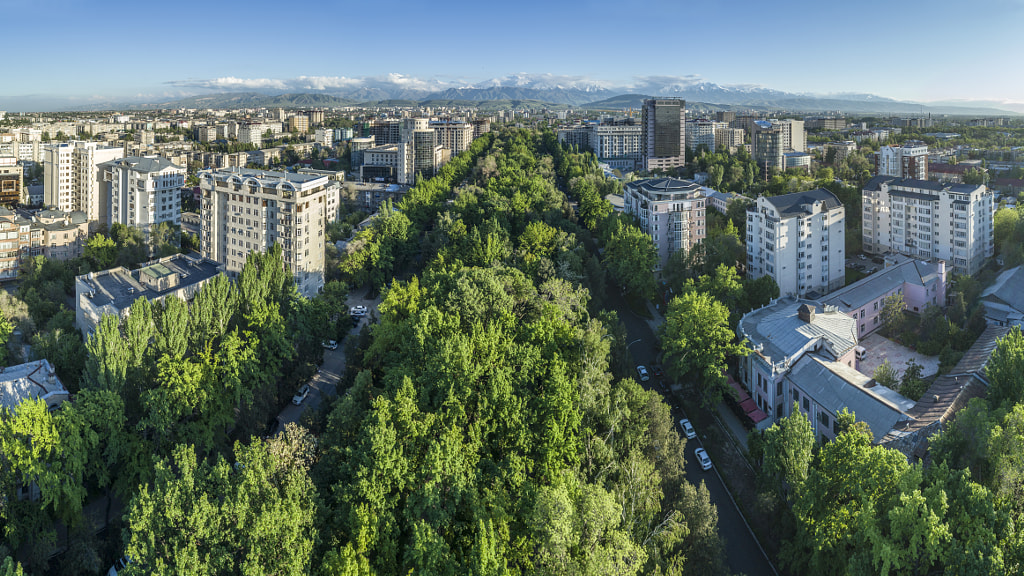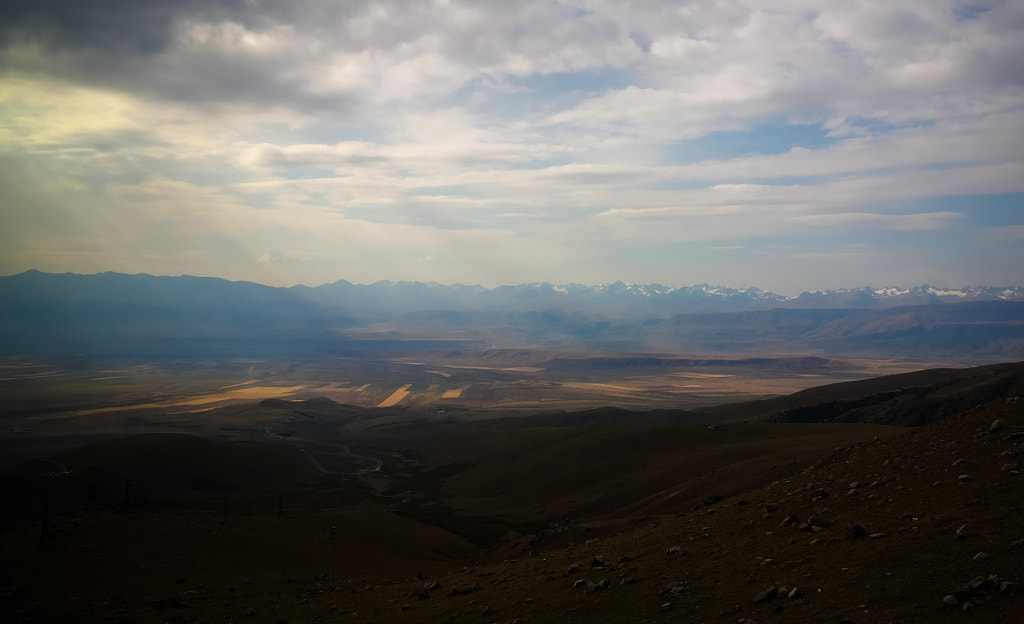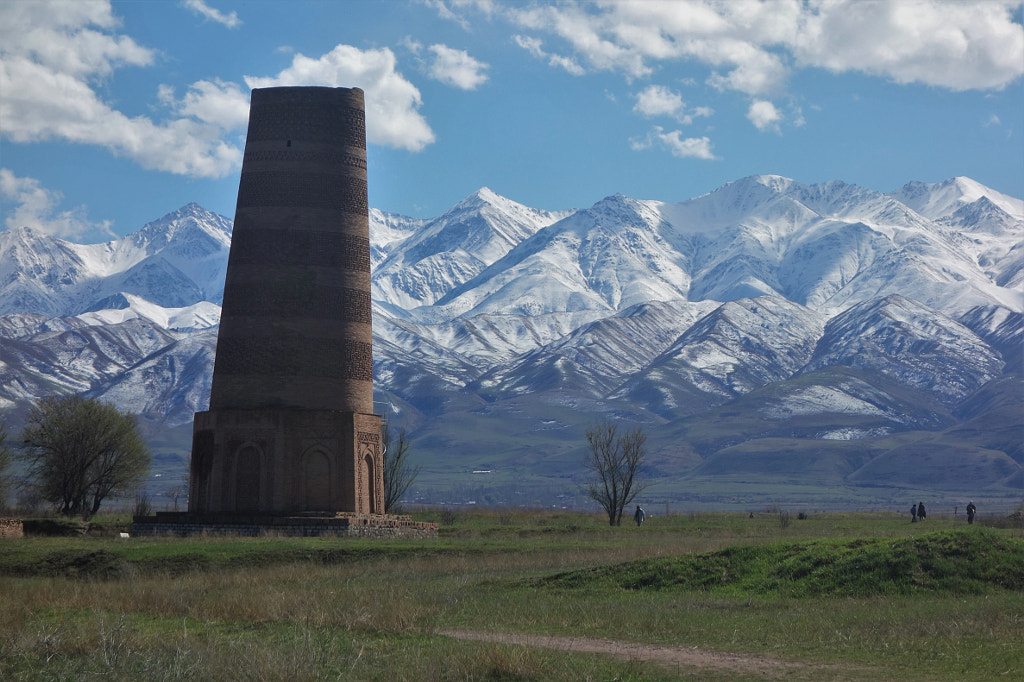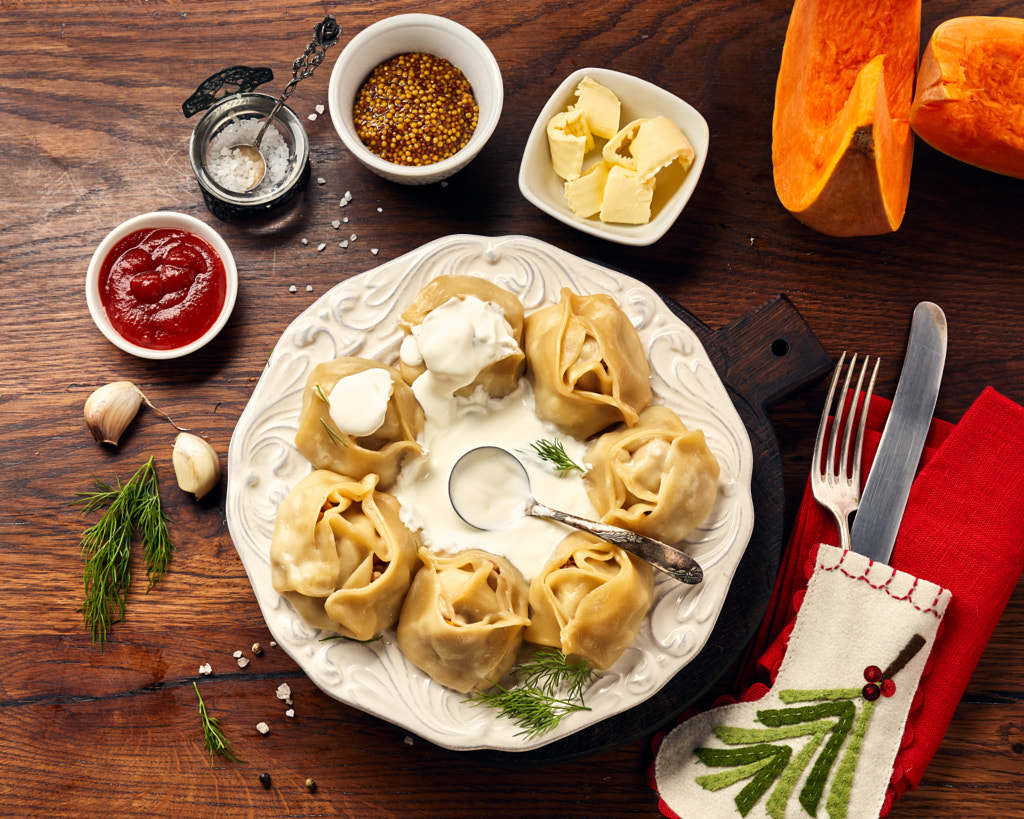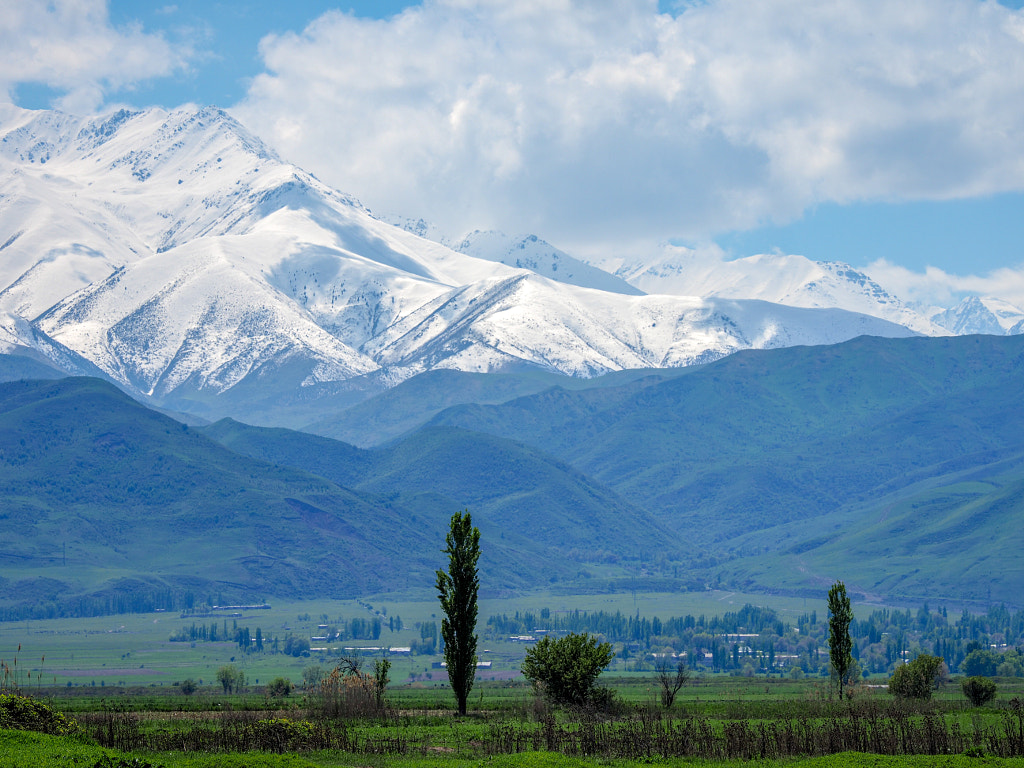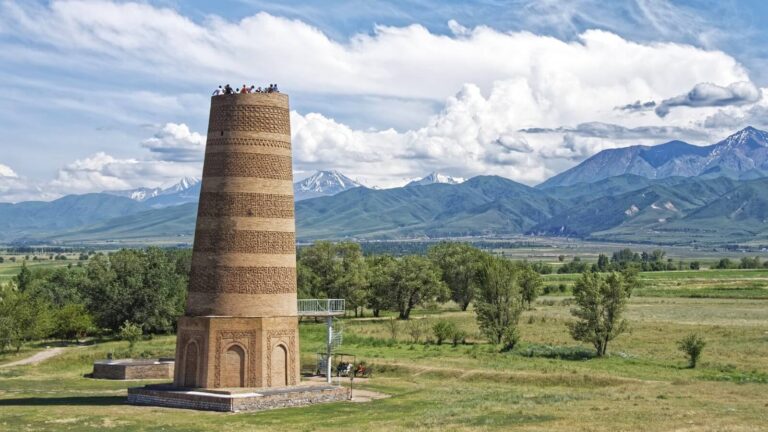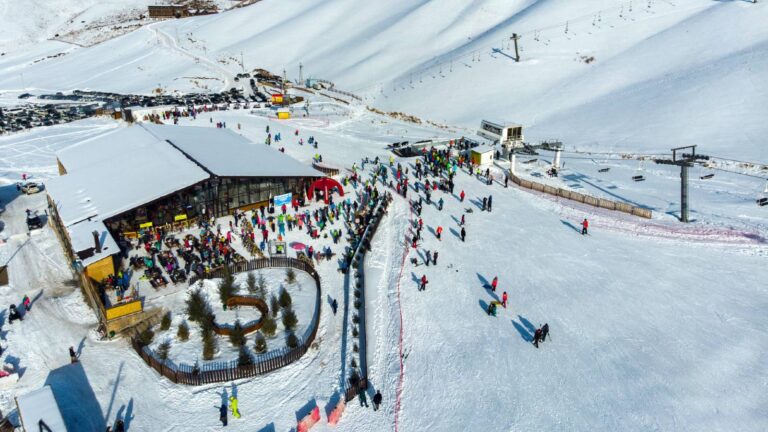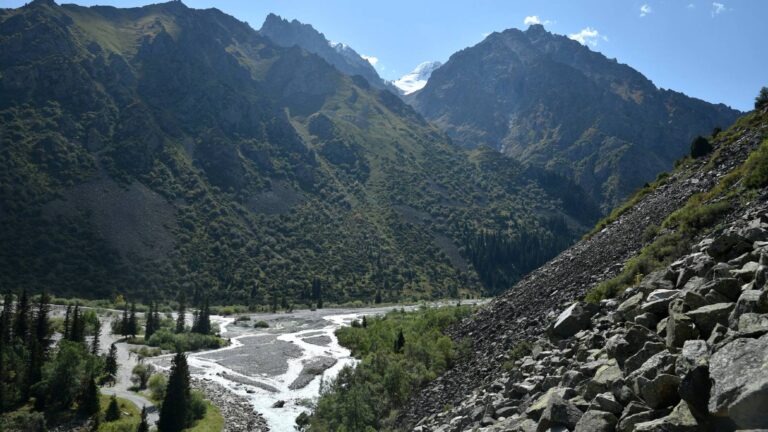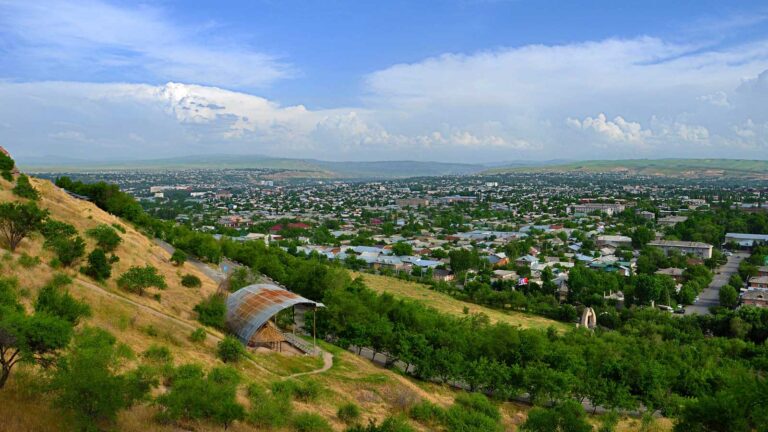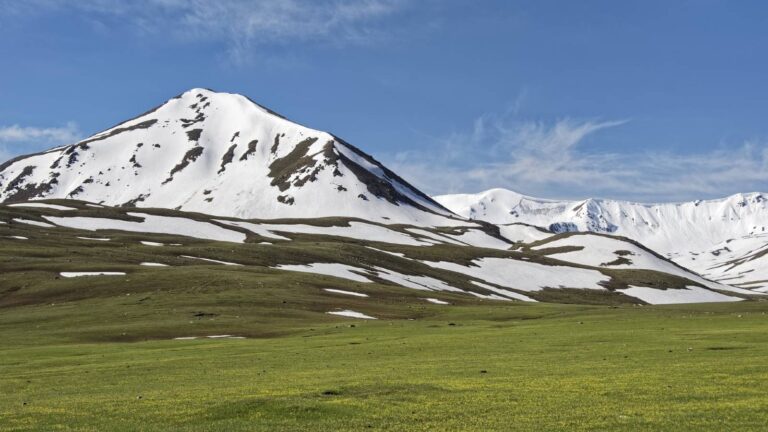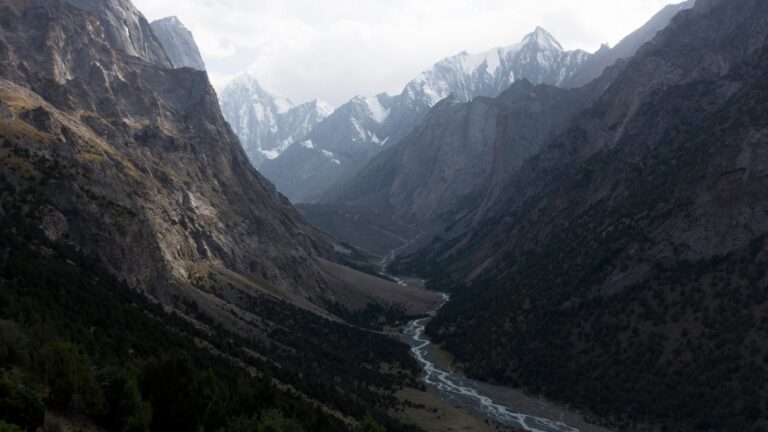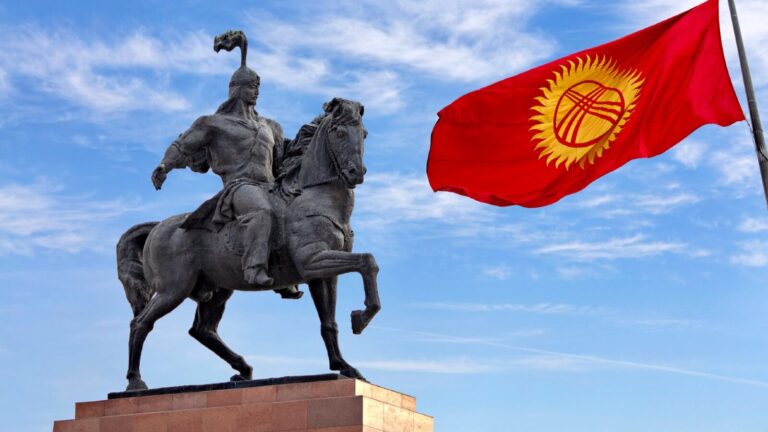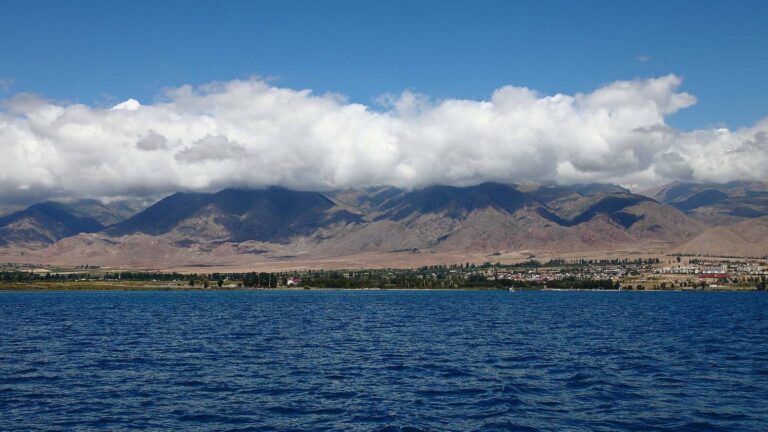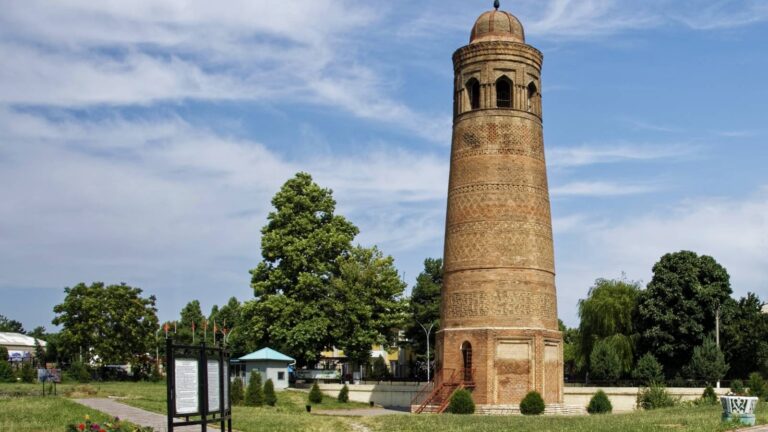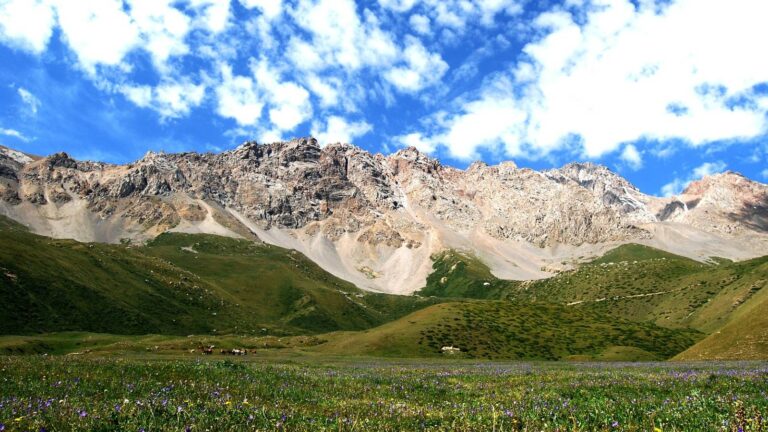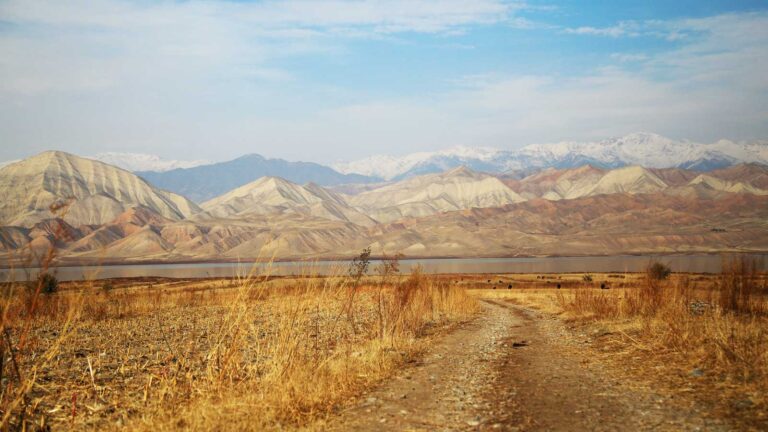Most international visitors arrive to Bishkek’s Manas International Airport or overland from Almaty (Kazakhstan) via the Korday border checkpoint.
Within the Kyrgyz Republic, flights connect Bishkek to other major cities and land transportation connects to every other region in the country.
From Chuy towns aside from Bishkek, there are some options for travelling directly to the Issyk-Kul region or the Kazakh border, but other destinations typically require travelling through the capital.
At the centre of the Chuy Valley, Bishkek’s Ala-Too Square is among the first impressions that most visitors get of the Kyrgyz Republic. Though it presents a Soviet facade of grand government buildings and the large statue of Lenin that still stands behind the square (now replaced on its former plinth by Kyrgyz epic hero Manas), this belies the nature of the modern Kyrgyz Republic just below the surface.
State-of-the-art exhibits at the Kyrgyz National Historical Museum on the northern side of the square, the excellent range of Soviet modern and post-Soviet artwork displayed at the nearby Museum of Fine Arts, and the booming street culture and restaurant scene of tree-lined Erkindik Avenue compete for visitors’ attention.
Beyond the city limits the memorial complex at Ata-Beyit as well as the Burana Tower and surrounding archaeological sites give insight into the history of the region, while just a little further south hikers and picnickers alike make summer day hike and winter ski breaks to Ala-Archa National Park, Chunkurchak Valley, and Kol Tor lake.
Bishkek is an easy base for day trips or between longer journeys across the region, with a wide range of accommodation and culinary options to suit every budget range.
The region received its name from the Chuy Valley, one of the largest valleys of Kyrgyzstan, through Chuy Region, one of the largest rivers of the Tien Shan, the Chuy River, carries its waters from the slopes of numerous ridges and glaciers in the north of the country.
The Chuy Region has a rather ancient and rich history. Since ancient times, due to its good climate, huge water and natural resources, the Chuy Valley has been a center of civilization in Central Asia. The Great Silk Road passed through the valley, therefore, in different historical periods, a variety of cultures and peoples found their refuge here. So on the territory of Chuy Region lived ancient Scythians and Turks. There are also centers of different religious cultures, Buddhist and Islamic.
Numerous historical settlements and cities were located on the territory of the valley at different times. These include, for example, the city of Balasagun (Burana Tower), the capital of the Karakhanid state, the remains of which can still be seen, as well as the Krasnorechesky fortified settlement, the ancient settlements of Suyab, Nevaket and Ak-Beshim.
Events
The largest celebration of nearly all national holidays happens on Bishkek’s Ala-Too Square.
Throughout the year, both the capital and the Chuy Valley host a number of other events popular among both tourists and the local population: Bishkek Jazz Festival in April, Alpinada Climbing Festival at Ala-Archa on May 1, Bishkek Tourism Festival in late May, Oimo Handicrafts Festival in August, and numerous other cultural and sport-related events throughout the year.
Gastronomy
Chuy valley’s gastronomy is as diverse as its population. Kyrgyz, Uyghur, Dungan, Russian, and other local ethnic cuisines are all well-represented across the region, while Bishkek’s restaurant scene pushes this even further by incorporating everything from European, South Asian, Mediterranean, East Asian, and even a handful of Southeast Asian and Middle Eastern offerings.
Further, Bishkek’s nightlife is the busiest in the country, with everything from classical performance spaces to underground dance clubs and domestic craft beer to busy teahouses.
Geography
Chuy Region consists of several parts: Chon-Kemin, Kichi-Kemin, Suusamyr valley, Slopes of Kyrgyz Ata-Too and Kungey Ala-Too. The lowest point of the valley is considered to be 550 meters above sea level, the highest point is 4895m.
Bishkek city (the capital of Kyrgyzstan) is located in Chuy Кegion. Other big cities also located here are: Kant, Tokmok, Kara-Balta.
Climate
The climate is diverse. In the north, in the flat part, the climate is continental, dry, hot summers, and mild and cold winters. The average temperature in July is 17-25°С, in January -7° С. The distribution of precipitation in the Chuy Valley is decisively influenced by the height of the area above sea level. Average annual precipitation is 270-400 mm. The average July temperature in the high-lying Suusamyr valley is 13-14°C, the January temperature is -20 ..- 2°C, the average precipitation is 350-370 mm.
On the slopes of the mountains, as the altitude rises, the air temperature decreases, and the amount of precipitation increases. The Kyrgyz Ala-Too has 582 glaciers with a total area of 520 km². Most of them are located in the central part of the ridge.
The Chuy Region is one of the industrialized regions of the Kyrgyz Republic where growing and emerging industry sectors such as processing industry, construction, trade, transport, agriculture, services (around 4,500 large, medium and small enterprises) are located. With its population of 921,700 people (14.7% of total country population), the unemployment rate in the region is 8.1% (29,402 people).
Tourism accounts for approximately 5% of Kyrgyzstan’s GDP, with the majority of major organisations in the international inbound tourism sector based in Bishkek. The Kyrgyz Association of Tour Operators represents the sector’s interests domestically and abroad, and members organise tourist itineraries across the region.
Agricultural production includes wheat, maize, sugar beets, potatoes, lucerne, and various vegetables and fruits.

